fall inside a hole
Tinplate Plarail (1999)
First written April 8, 2024

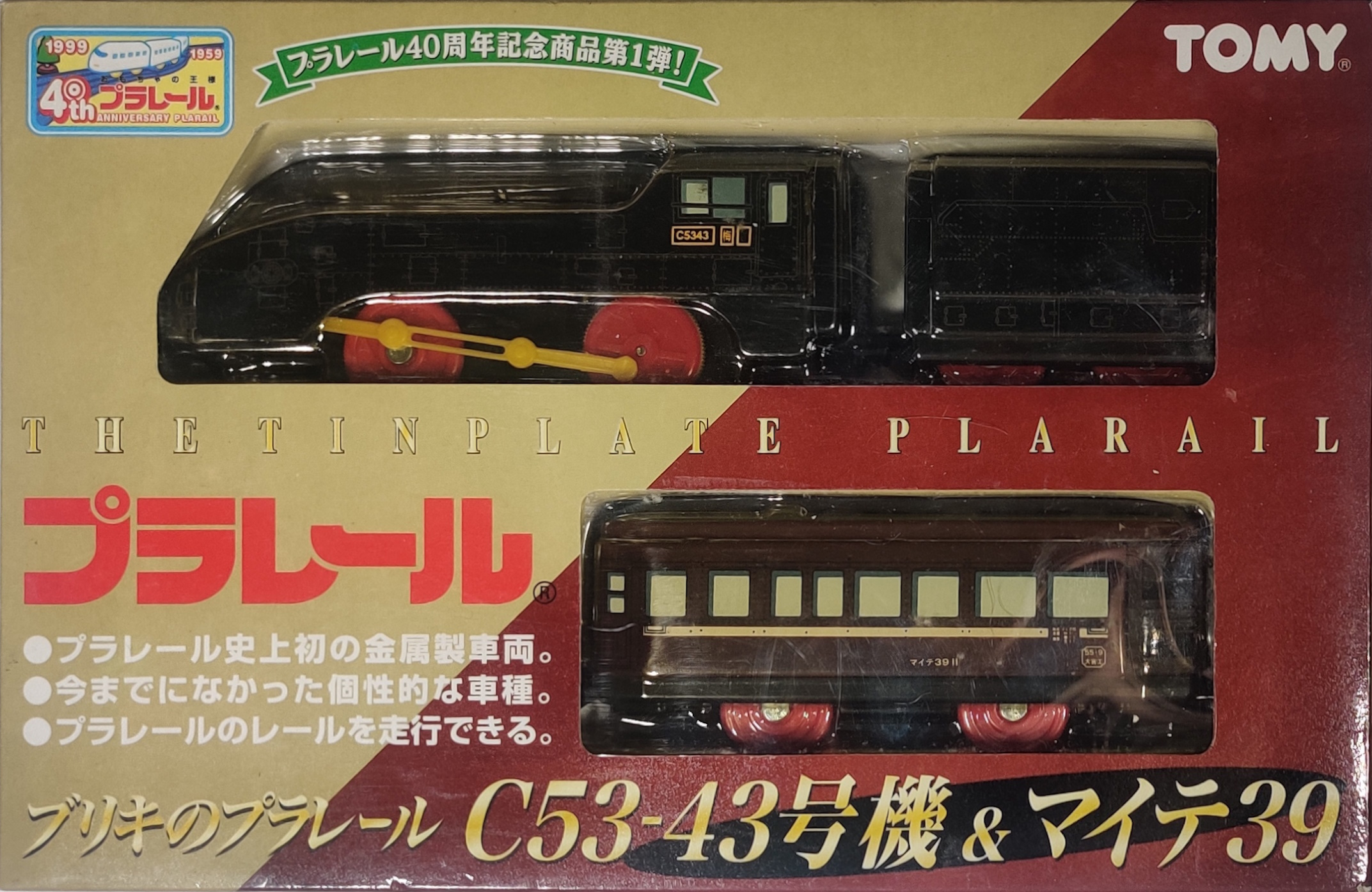


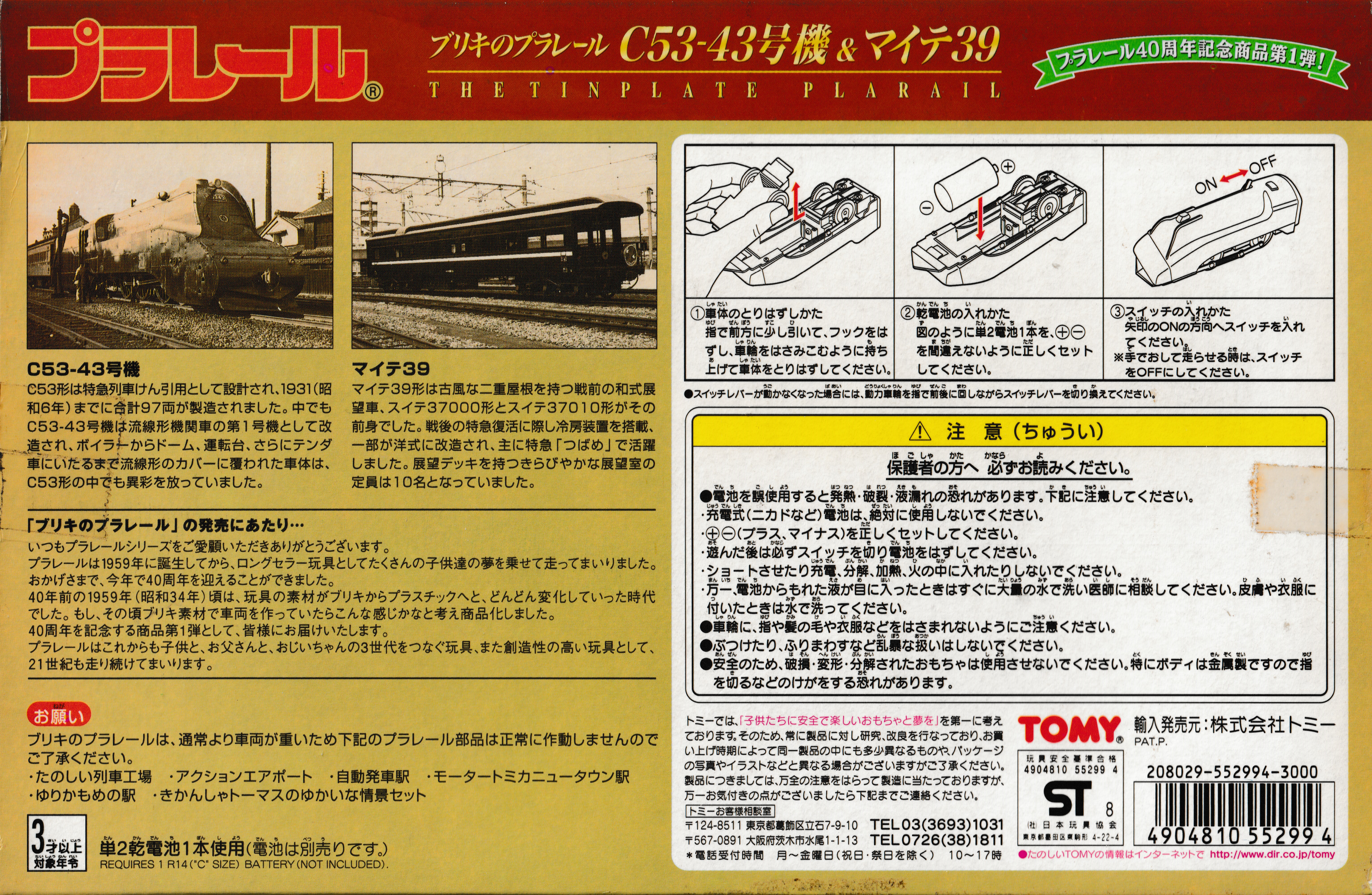
In 1999 as part of their celebration of the 40th anniversary of Plarail Tomy released a tinplate C53 steam locomotive and passenger car as ブリキのプラレールC53-43号機&マイテ39 or Tin C53 unit 43 & Maite 39. The back of the box says of the C53, approximately: The C53 type was designed for towing limited express trains, and a total of 97 locomotives were manufactured by 1931 (Showa 6). Among them, C53-43 was modified as the first streamlined locomotive. Its body is covered with a streamlined cover from the boiler to the dome, the driver's cab, and even the tender car is unique among the C53 types. Of the observation car it says: The Maite 39 type was a prewar Japanese-style observation car with an old-fashioned double-layer roof, and its predecessors were the Suite 37000 type and the Suite 37010 type. When the limited express train was revived after the war, it was equipped with an air conditioning system, and some parts were modified to a western style. it was mainly used on the limited express Tsubame. The glittering observation room with an observation deck had a capacity of 10 people. The set first went on sale in February 1999 at a suggested price of 3,000 yen - 800-1000 yen more than the most expensive regular three-pack Plarail releases.

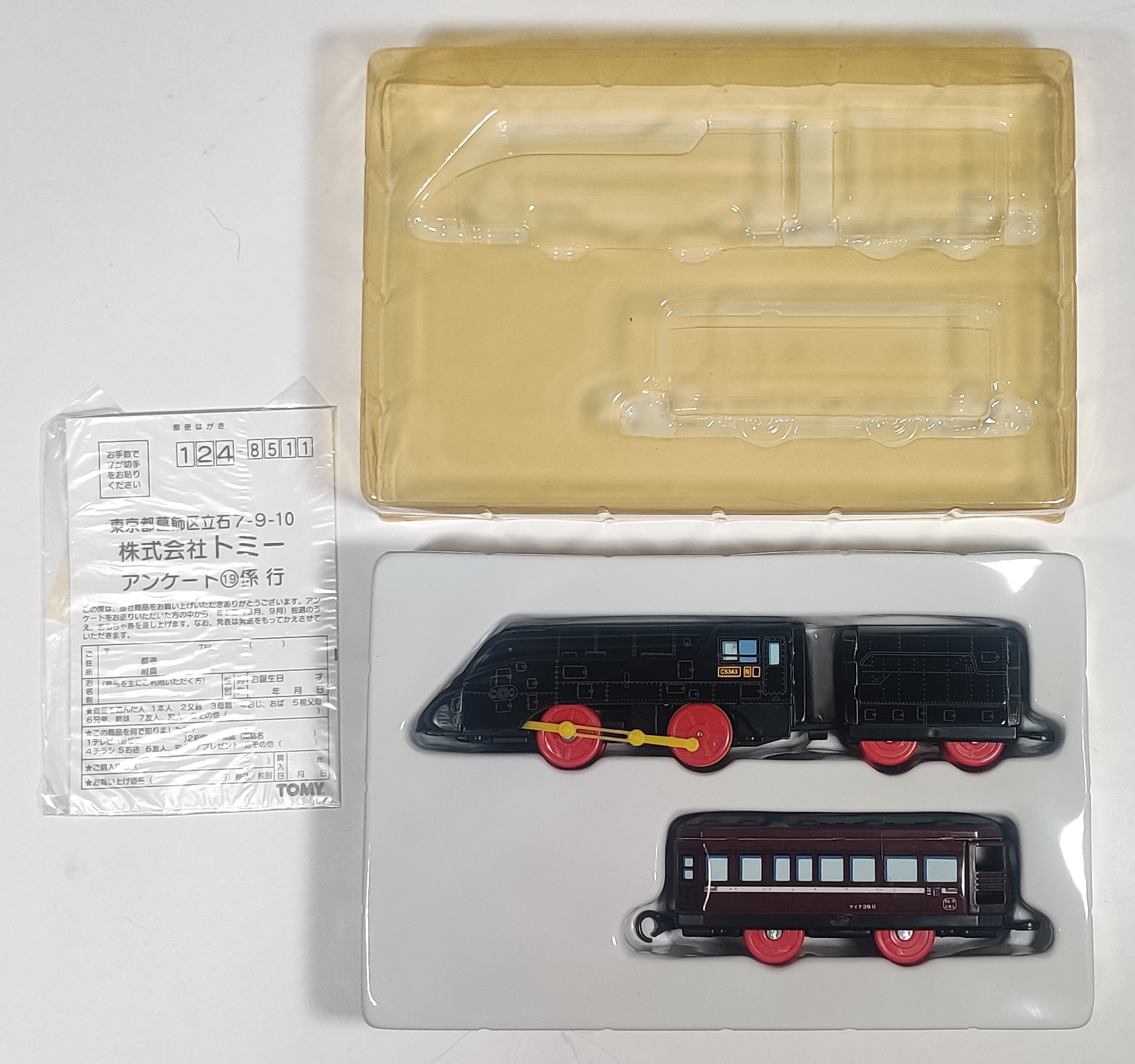
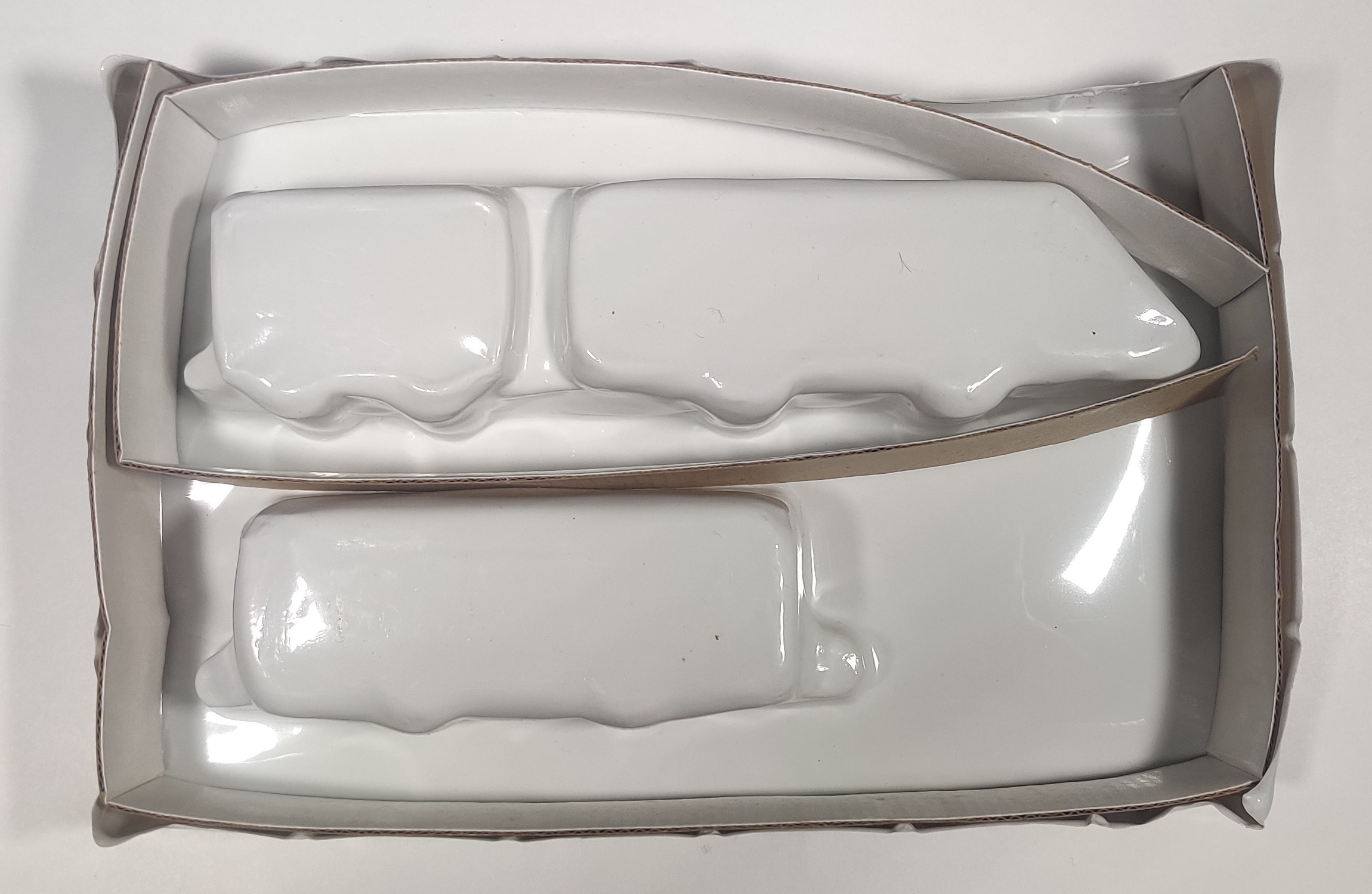
Inside the box is a plastic tray with a clear cover layer which has yellowed on my example. The underside of this formed tray has some cardboard supports and a small bag includes a survey card and two stickers for the rear of the observation car. The box has the Plarail 40th anniversary logo and a green banner on it as well as a rather nice overall design with a tan and maroon color scheme and cool typesetting with the black ellipses behind it... it gives the impression of a cool, old product. The idea with making a tinplate Plarail is to explore a "what if" type of train if Tomy had developed Plarail as a tin train toy instead of a plastic one, as Tomy had produced many tin toys before beginning to produce plastic toys in the later 1950s. The back of the box says about the release of the Tin Plarail: Thank you for your continued patronage of the Plarail series. Since Plarail was born in 1959, it has been a long-selling toy that has carried the dreams of many children. Thanks to you, we were able to celebrate our 40th anniversary this year. Forty years ago, around 1959 (Showa 34), the material for toys was rapidly changing from pre-formed to plastic. We thought about what it would look like if vehicles were made from tin material at that time and commercialized it. We deliver this to you as the first product to commemorate our 40th anniversary. Plarail will continue to thrive in the 21st century as a toy that connects three generations: children, fathers, and grandparents, and as a highly creative toy.
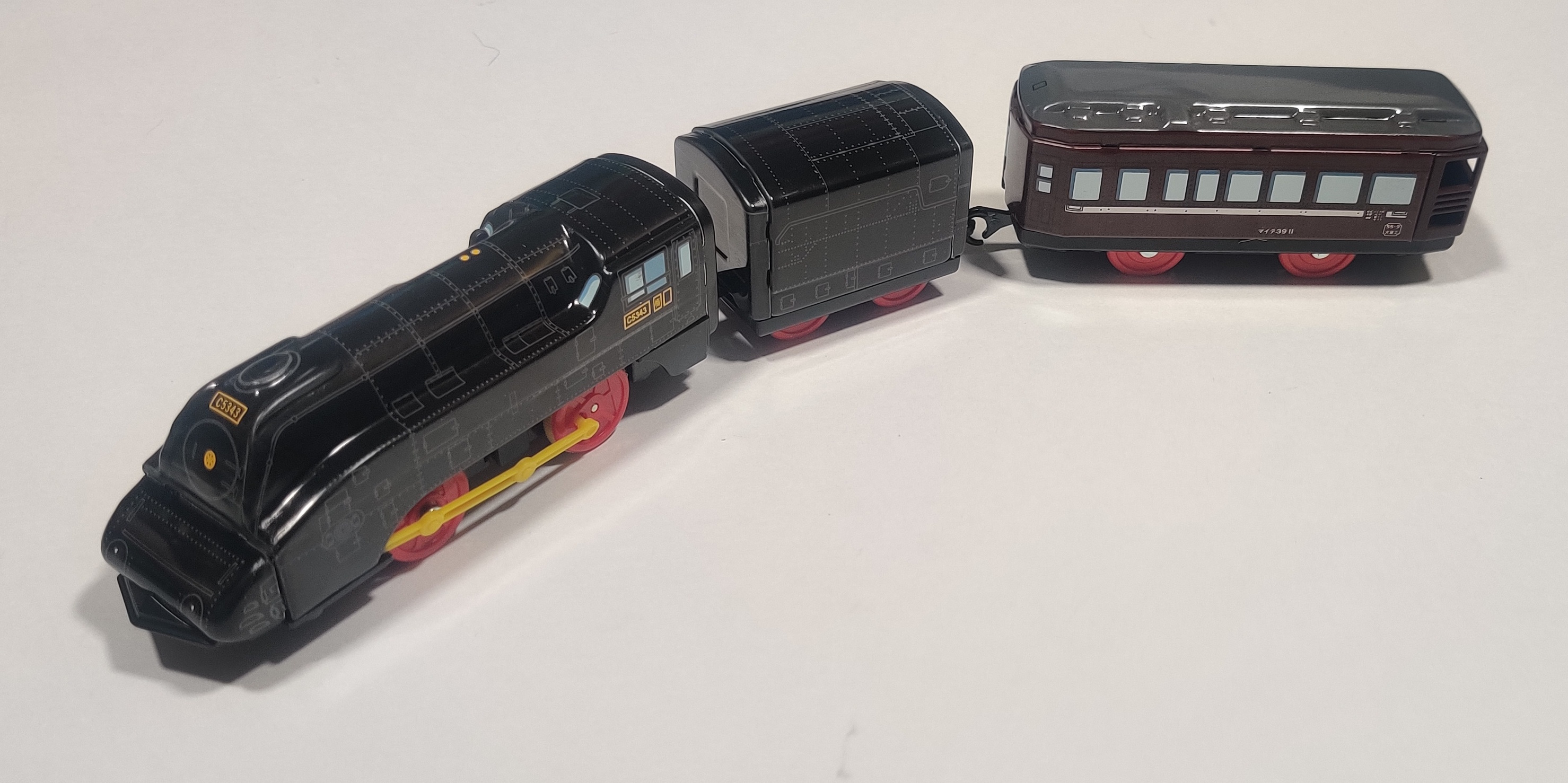
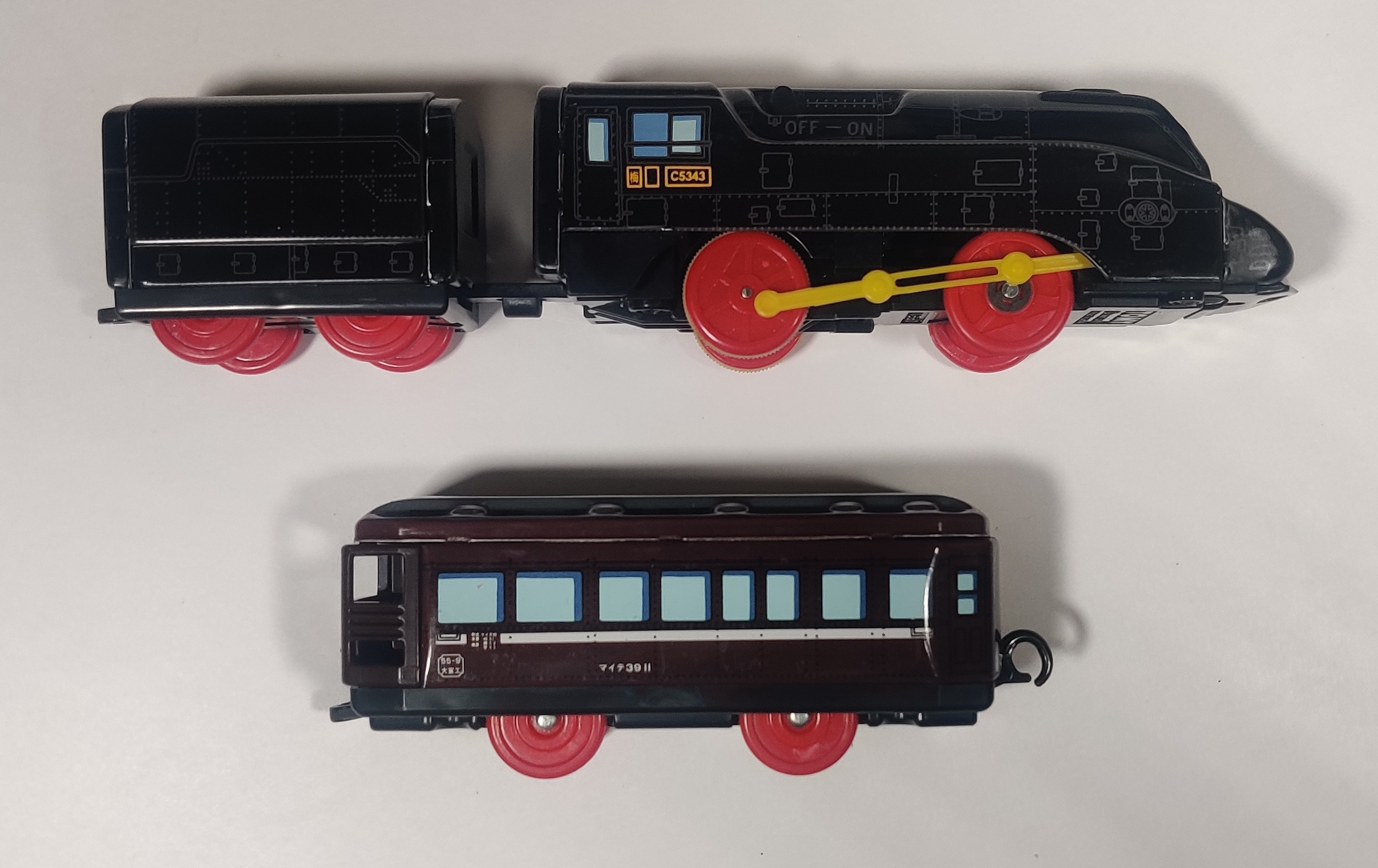
The streamlined C53 is cool, and the specificity of the unit and its streamlining is part of Tomy's trend towards more accurate running numbers and stylings. It is cool that a specific unit was chosen that would probably never get a regular release because of its obscurity but by making it a commemorative special tin train it stands out as a product while intentionally only being in production for a relatively short time.
As the back of the box suggests, this was one of Plarail's first real commemorative products and the first of their 40th anniversary products. The box uses the seemingly-earlier 40th anniversary logo with a yellow-wheeled Nozomi. The ST8 number implies the product was planned ahead of time in 1998. Tomy released a bunch of new commemorative products for this anniversary, seemingly one of the most celebrated thus far. It does seem that the somewhat odd nature of this release meant people were less interested in it, and I heard it could still be found in toy stores for years after. It was not very hard to find my unused example.
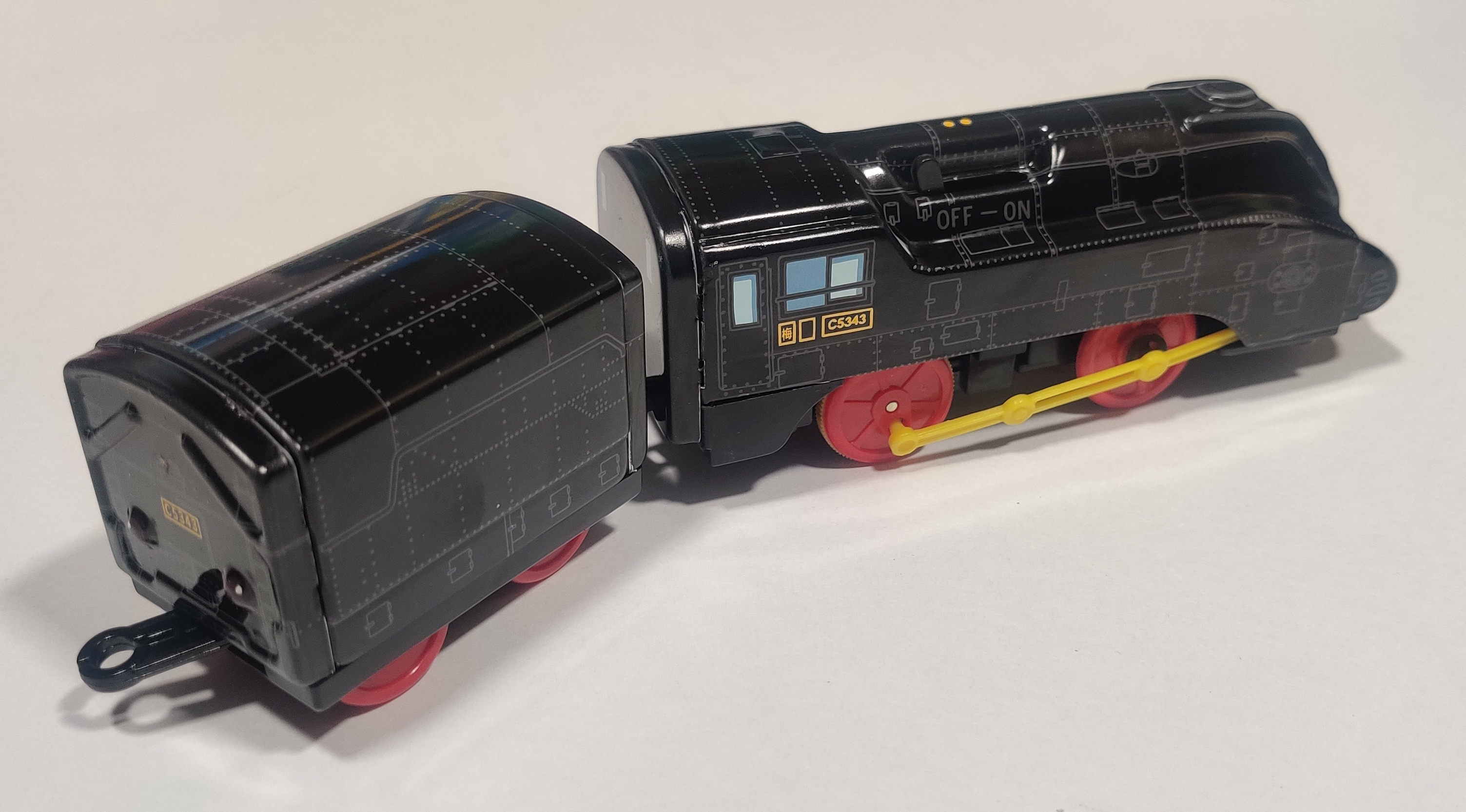
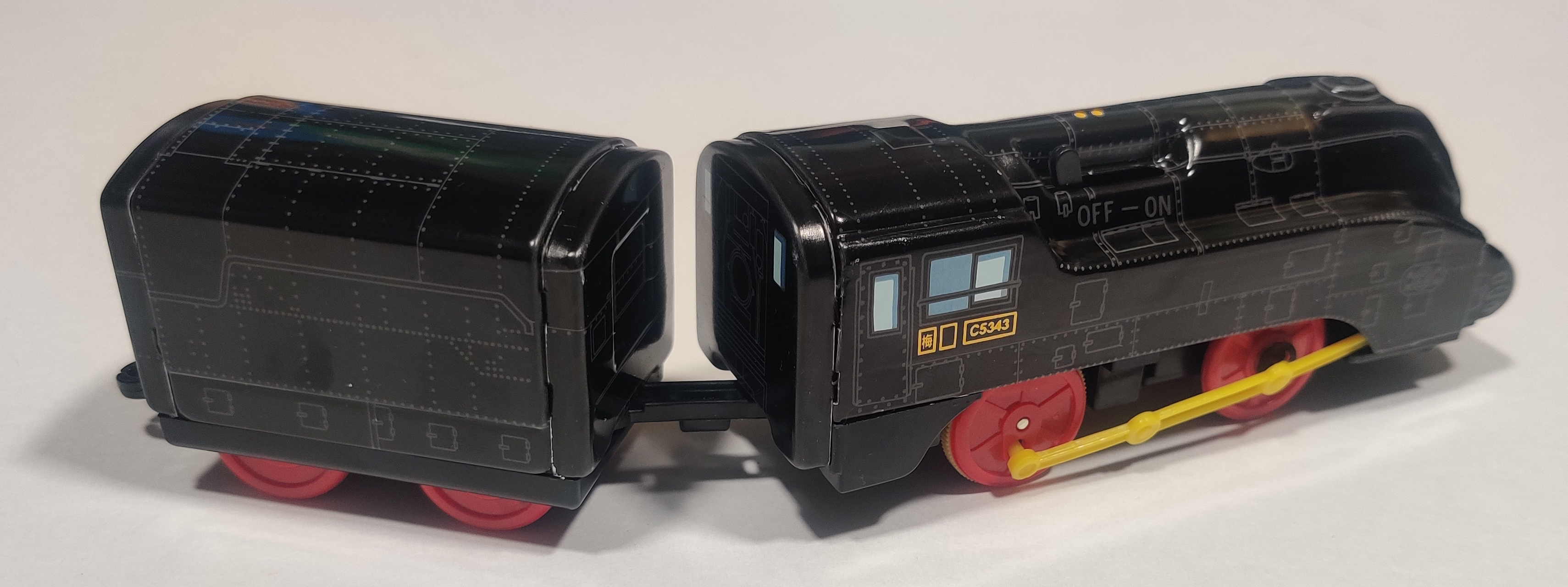
The engine is made up of a few lithographed tin sheets inserted into one another as well as the plastic chassis and gearbox units. The tender is attached and has a tinplate body and plastic chassis. The lithography is very nice and has many rivet and plate details as well as some nice window detailing.

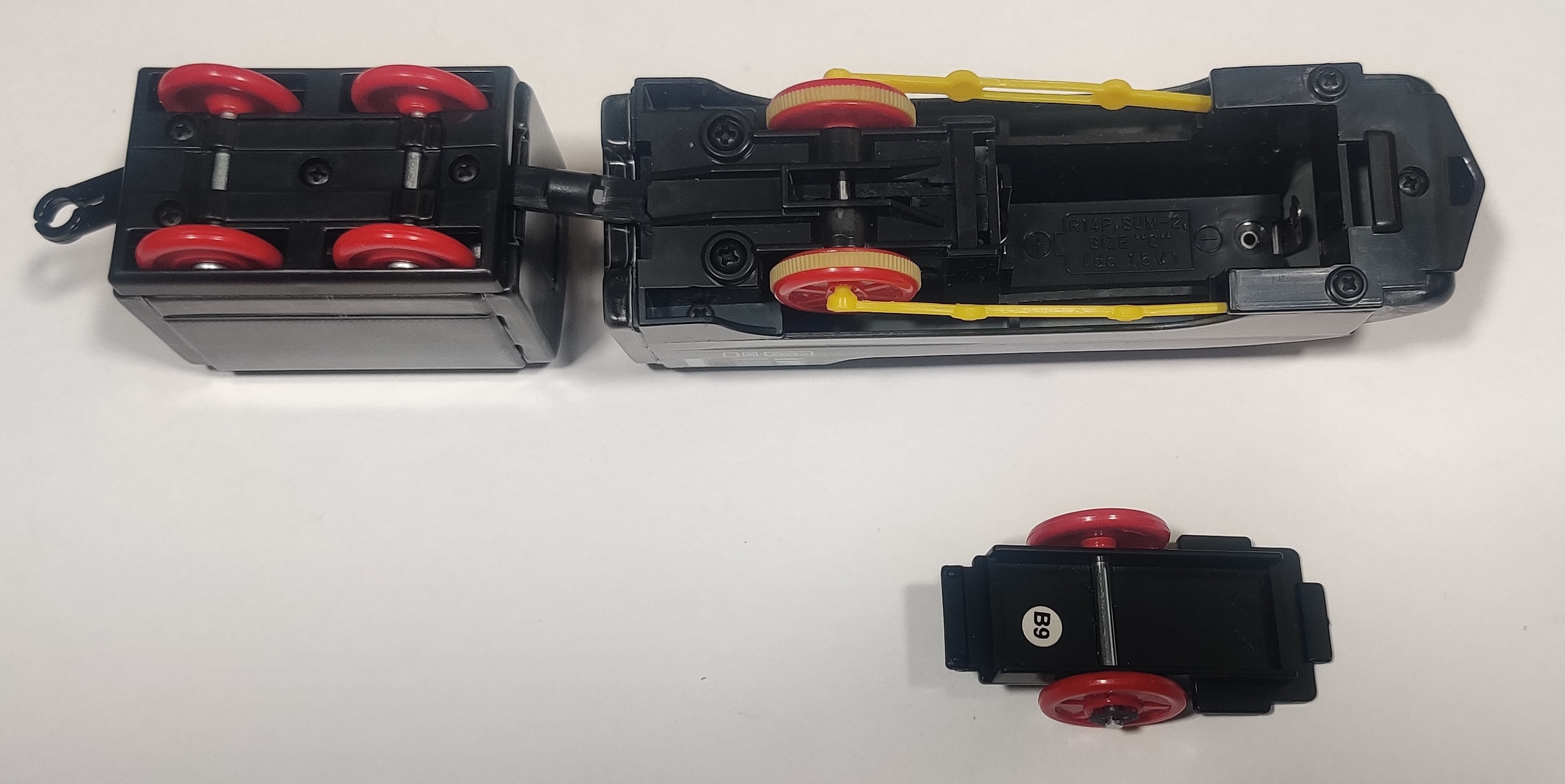
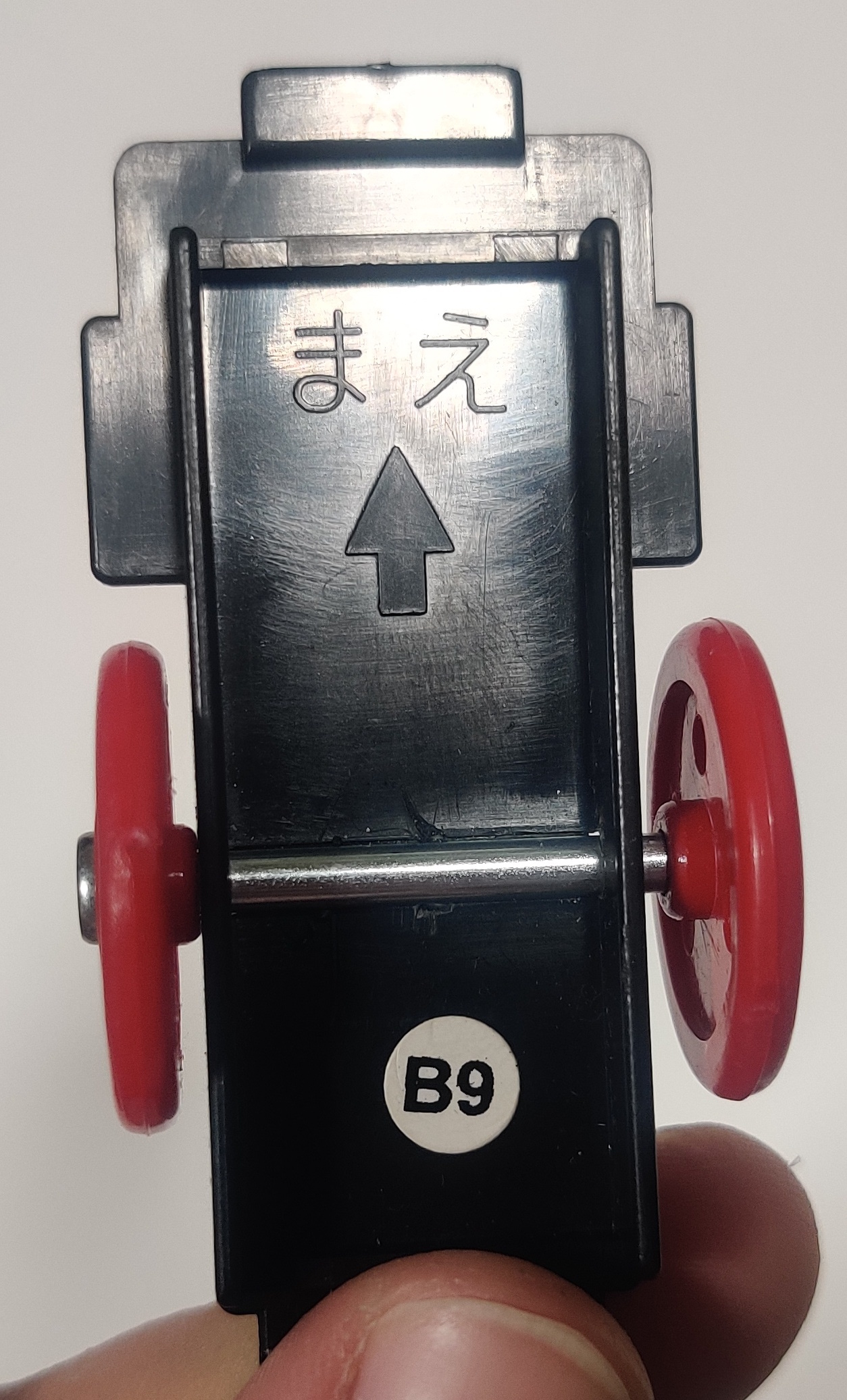
The locomotive and car were both made in China, somewhat of a rarity for Plarail at the time - perhaps because China was the easiest place for them to find a company that would produce the lithographed metal sheets for them? The drive system and battery compartment is unique to this locomotive. A round sticker denoting a February 1999 production period is stuck inside the completely removable front wheel battery cover.
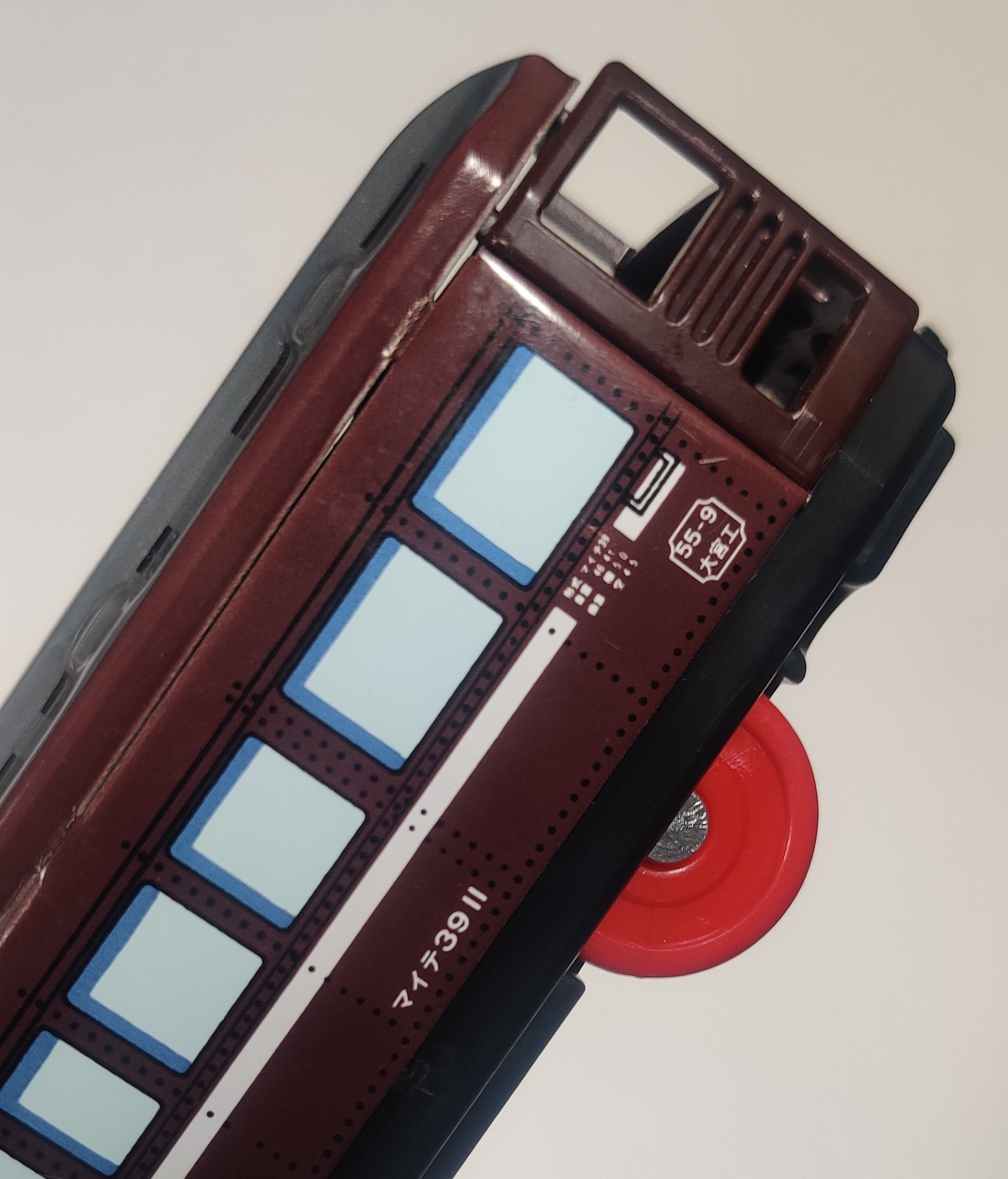
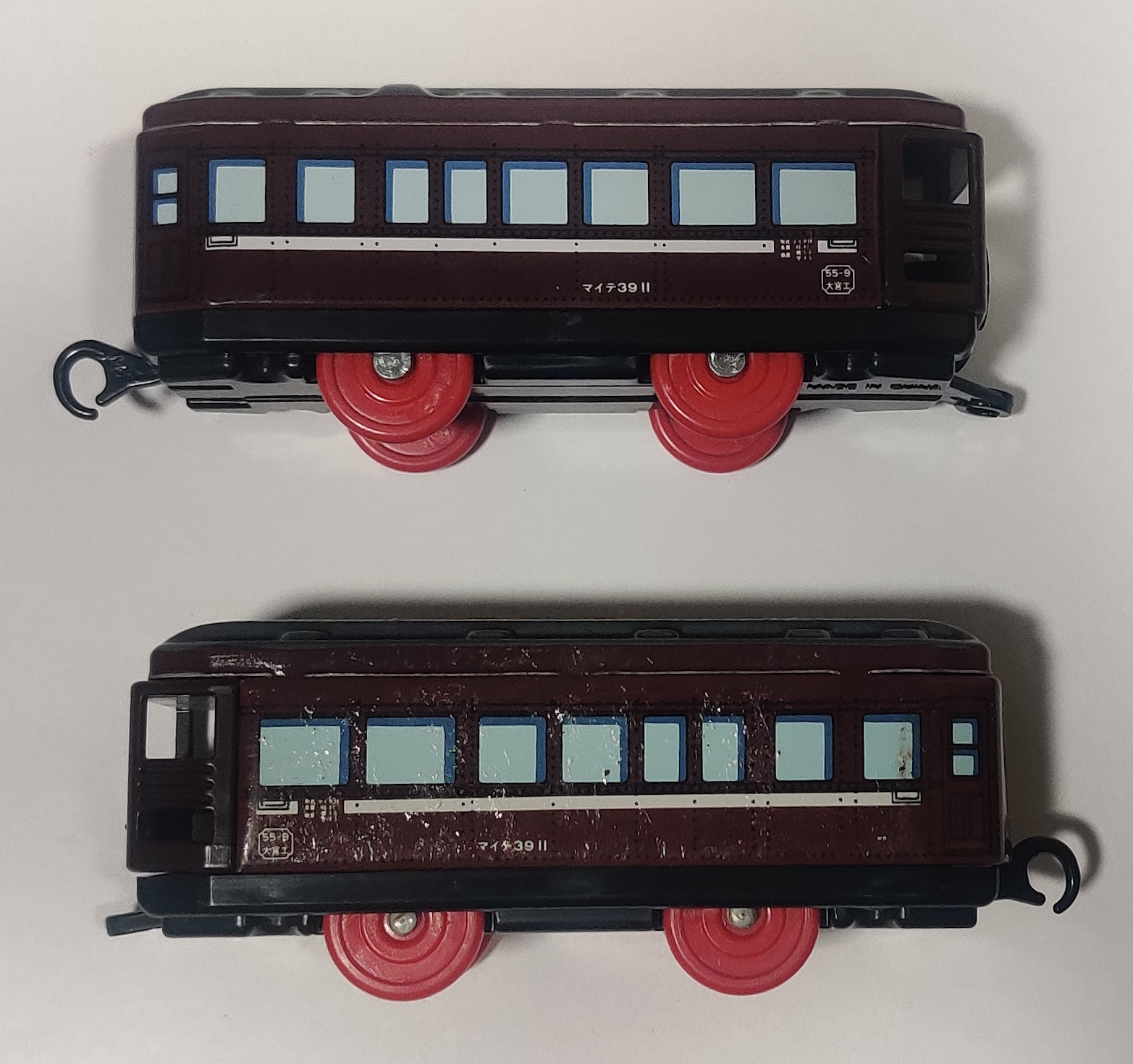
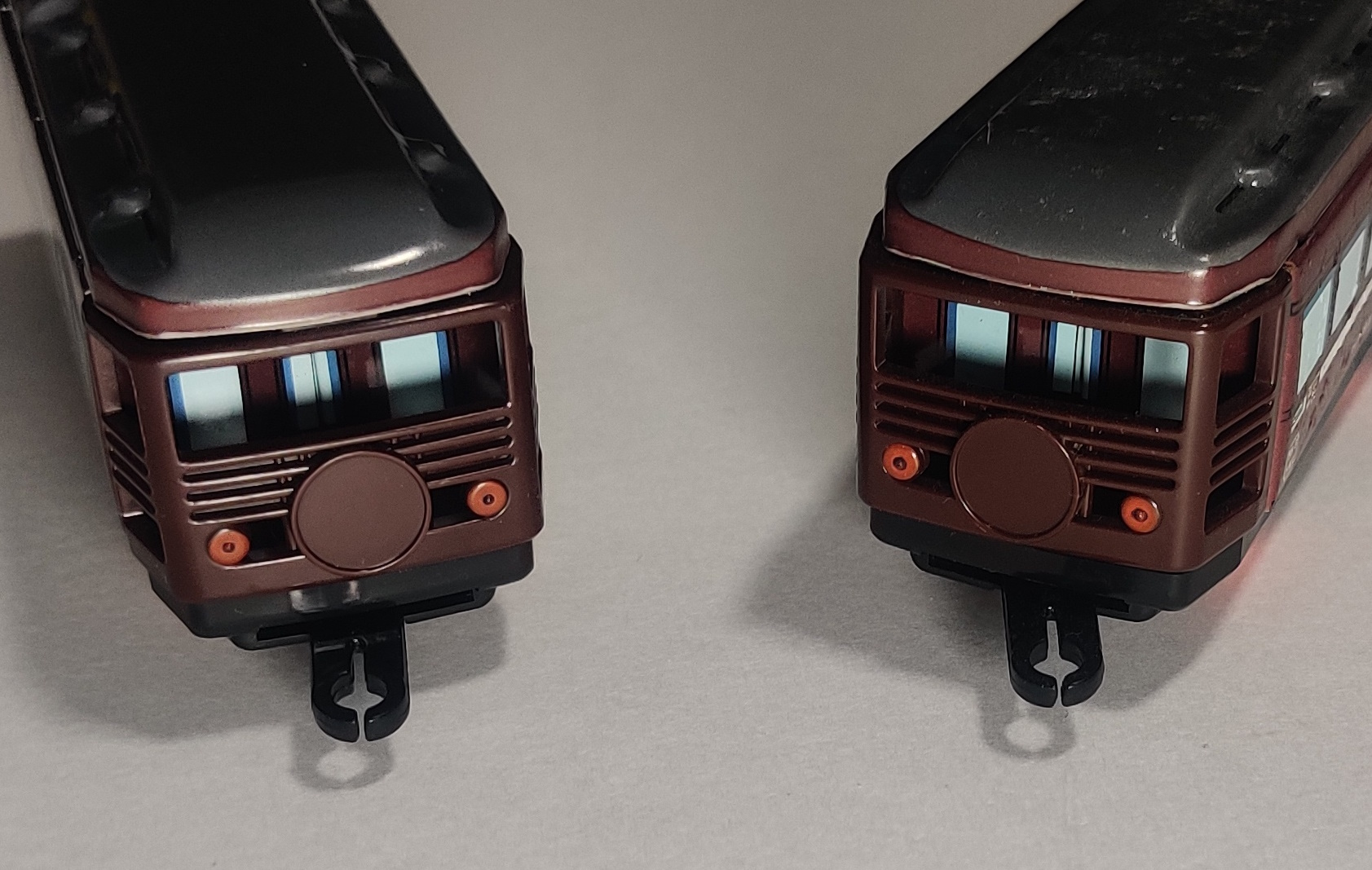
The coach is similarly nicely detailed with representations of the classification and specification markings in the lithographed pattern. The chassis and observation deck are made out of plastic. I actually have a second example of the tinplate coach, although this one has fared worse and seems to have accumulated some kind of moisture or other contaminant that has caused the paintwork to bubble. The rear of the observation deck has a spot for a tail mark sticker.
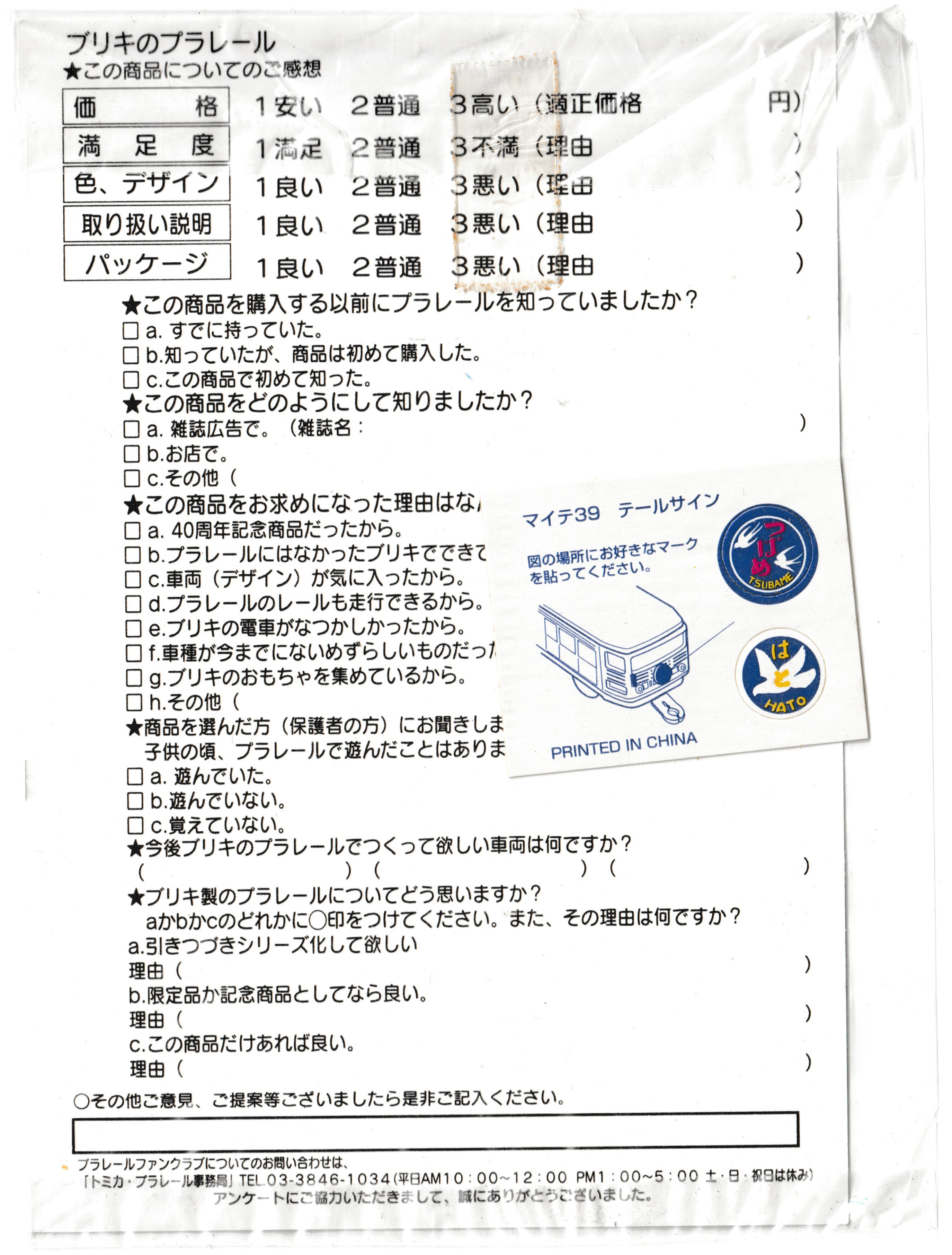
The pack includes stickers to represent a train pulling the つばめ Tsubame or Swallow train or alternately the はと Hato or Dove train. Both of these trains ran from Tokyo to Osaka and were the first Japanese Nation Railways limited express trains after the war, servicing the Tokaido main line. The line was electrified in 1956 and eventually became the Tsubame line which L Limited Express trains also depicted by Plarail primarily serviced. Some info about the early Tsubame service and a photo of the C53-43 can be seen on this webpage.
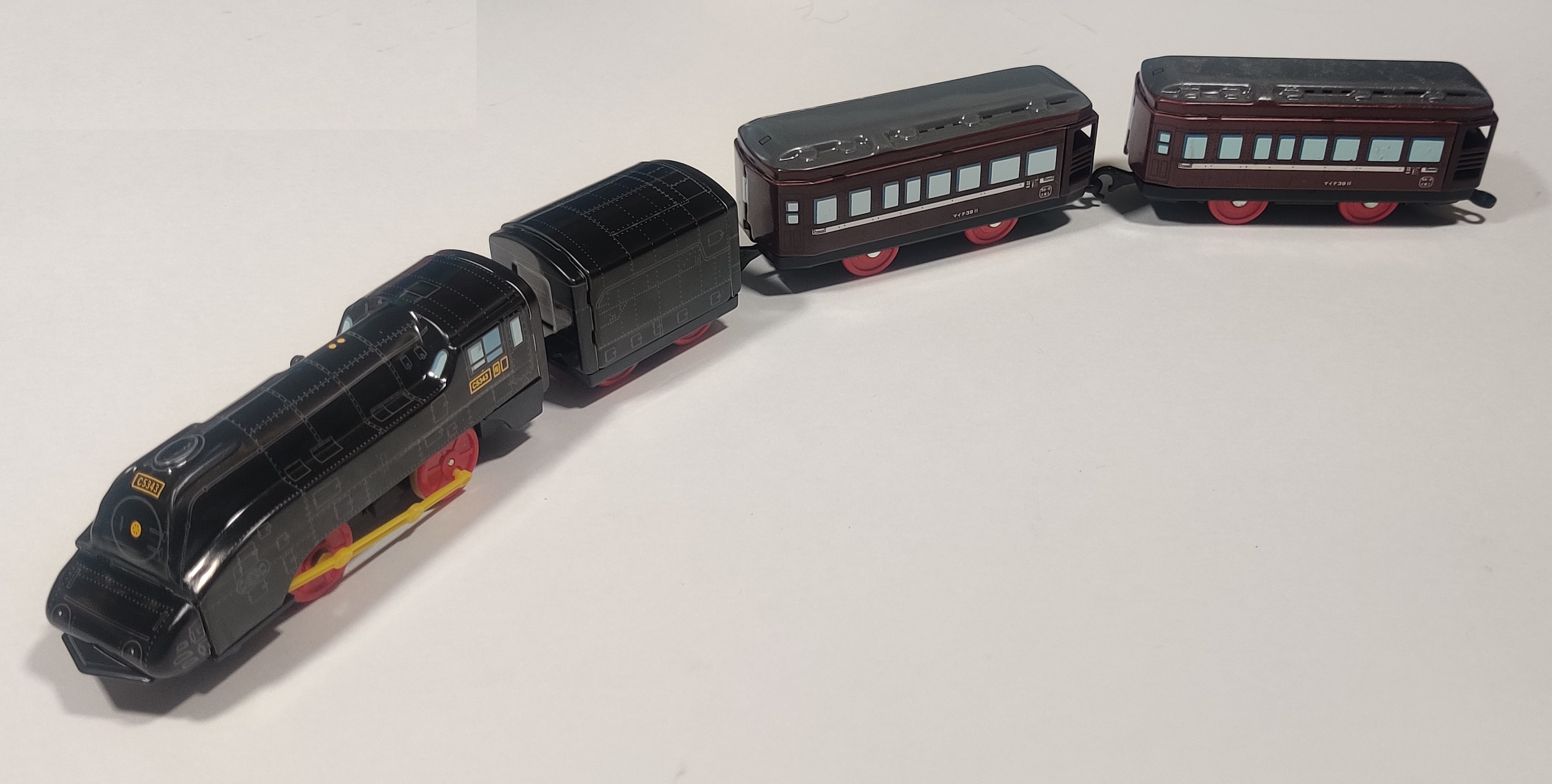
Although they are both observation cars, the C53 still looks good pulling two of them.